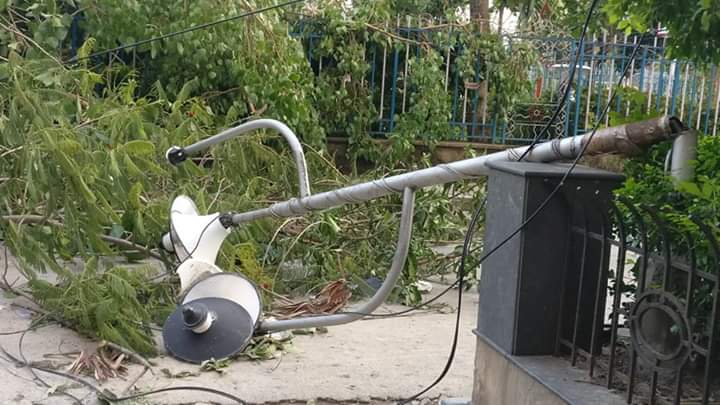–Mohammad Orooj Azmi
TNW, Kolkata, 22 May: The Amphan, one of the fiercest super cyclones to hit India in a span of 283 years, brought unimaginable devastation to states and districts in the eastern coast of the country, ravaging everything that stood in its path, affecting nearly 44 lakh people in the region. The Cyclone unleashed unprecedented havoc in West Bengal; those districts of the state which stood right in the path of ‘Amphan’, i.e, North and South 24 Parganas, Howrah, East Midnapore experienced worst casualties.
Bridges dismantled, trees fell, vehicles crushed and 106 human lives perished in the calamity. The destruction was so severe and incomprehensible that it prompted a rare melancholic response from the ever determined CM Mamata Banerjee. With her head on her hands, she said “Everything is finished.” in a miserable tone.

According to estimates 4000-5000 trees were uprooted, streets were flooded due to the torrential downpour which the cyclone brought along, electric supply lines, poles and even transformers in many areas were dislodged, leaving various parts of the ‘City Of Joy’ in darkness and fear.
Electric supply remained unavailable for several hours and in some areas it might take several days to restore supply. Even the wireless communication lines were affected which also took several hours to re-establish.
The species rich, mangrove area of Sunderbans suffered huge blow. The recognised UNESCO World Heritage Site, National Park and Wildlife Sanctuary, one of the most vital ecosystem in India, home to several species of flora and fauna was severely affected, leaving several endemic species of Mangroves uprooted and lifeless. The floras of Sunderbans have protected Bengal from strong and fierce winds and storms for several years by standing in their path, but this time, it was way too much for the Sunderbans. Consequently, an ecosystem which took centuries to get to this point was devastated in the fateful night of May, 21.

The agricultural fields, fisheries and apiaries where crops, fishes and honey are cultivated weren’t spared either. These were crucial to the state as they produce several products for human welfare and fodder for cattle to export it to various places for consumption. The districts which were hit have significantly large population of minorities. Most of them lost the means to earn money since their crops were completely destroyed and it will take quite a long time to re-establish their fields, the only source of their earning. The Cyclone has ravaged the houses, school and madarsas of majorly affected districts, leaving thousands of residents homeless.

The destruction caused by the devastating Amphan is estimated to be of 1lakh crores and the Central Government has announced a relief of 1,000 crores as of now, which seems to be the size of a droplet of water when compared to the estimated amount required for rebuilding.
The State Government also announced that a sum of 2 Lacs will be given to the families of the deceased and 50,000 to those critically injured.





